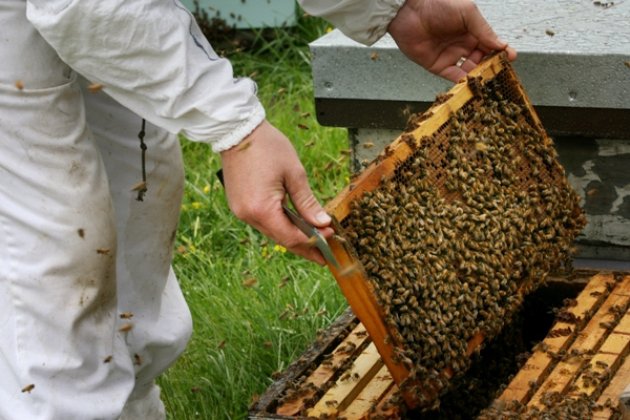MPI director of investment programmes Steve Penno says honeybee health is crucial because bees are the foundation of agricultural production in the NZ economy.
A handbook offering practical guidance on how to plant strategically to feed bees is now available free to New Zealand farmers.
The book brings together knowledge from 10 years of field and laboratory research by the New Zealand Trees for Bees Research Trust and is published with financial support from several funders, including the Ministry for Primary Industries (MPI).
Trees for Bees NZ farm planning adviser and trustee Dr Angus McPherson says the handbook is a useful tool to assist farmers support bees and incorporate planting for biodiversity and other environmental benefits that customers are now demanding.
“The beauty of our approach is that farmers don’t need to set aside land especially for this planting.
“We show farmers how to incorporate a low-maintenance bee forage planting plan into planting they’re already establishing to increase production and improve their farmland, McPherson said.
“We aim to help build more resilient and sustainable farms by taking the best possible care of our star performer – the honeybee.
“Bees all around the world are facing a number of threats, including pests, disease, and pesticides.
“The best weapon against these threats is to provide our bees with a steady supply of forage to help them stay healthy and strong,” McPherson said.
“That includes ensuring a wide range of flowering plants in spring and autumn when bees are most at risk of pollen and nectar shortages.”
The handbook covers 10 different types of plantations – riparian protection; land stabilisation; shelterbelts; paddock shade and shelter; native bush biodiversity; roads, avenues, and laneways; amenity; edible plantations; apiaries and beekeeper yards; and mānuka plantations.
Each plantation type is described with examples, illustrations, advice, and plant lists.
McPherson says the handbook’s principles and guidelines can be adapted to any type of farm, from pastoral to arable and horticultural farms.
“The same principles can also be applied when deciding what to plant in public parks, on lifestyle blocks and in home gardens.”
MPI director of investment programmes Steve Penno says MPI is proud to support this important research.
“Honeybee health is crucial because bees are the foundation of agricultural production in the NZ economy.
“Planting essential bee forage as part of farm management will ensure a viable and sustainable future for our bees, beekeepers, and farmers,” Penno said.
Since 2011, Trees for Bees has planted more than 75,000 bee forage plants on 32 demonstration farms throughout NZ.
The Handbook for planting trees for bees on farms is available as a free PDF on the trees for bees website.










